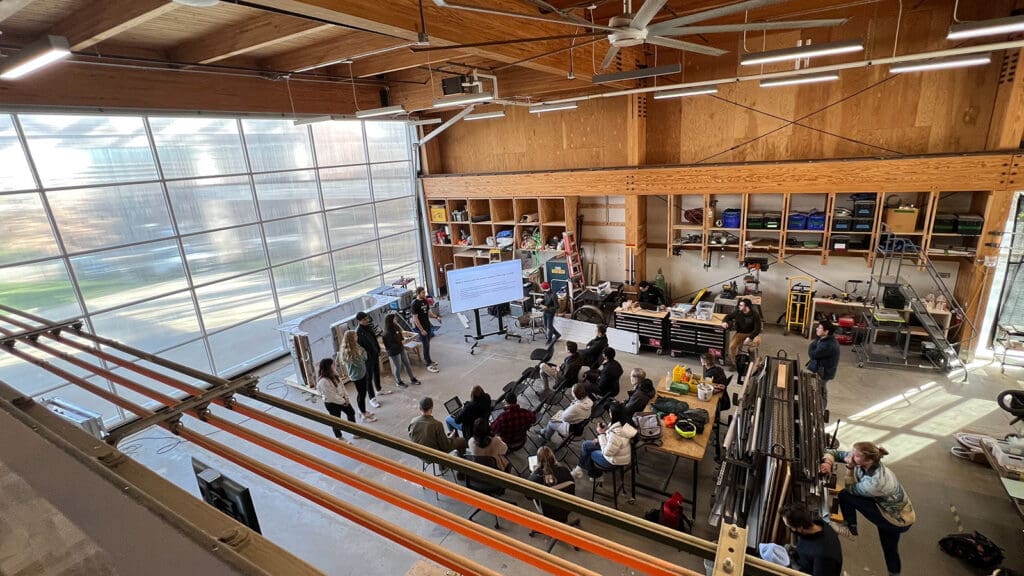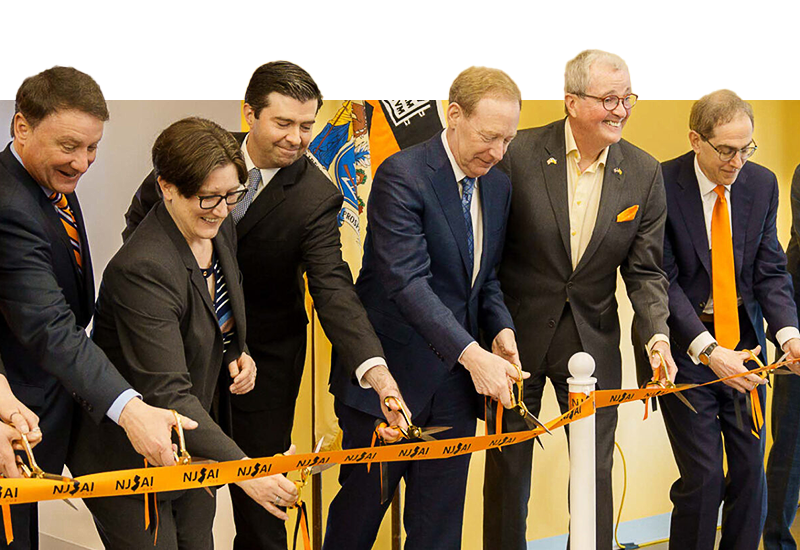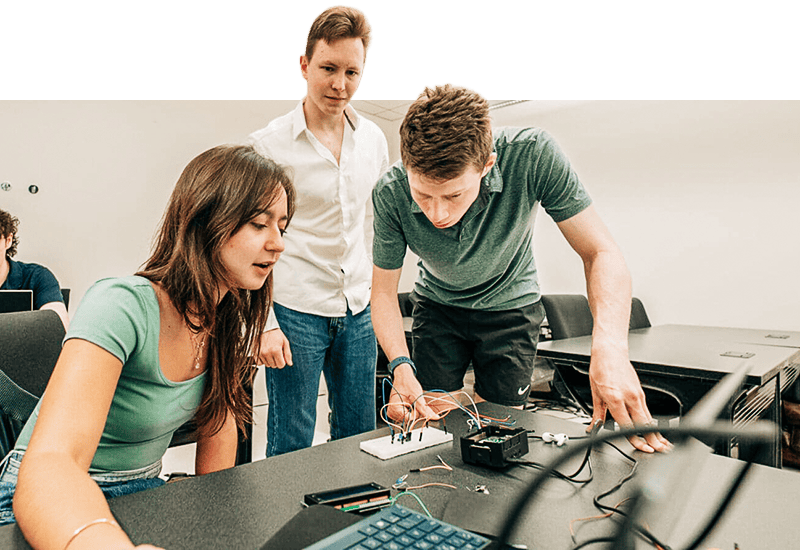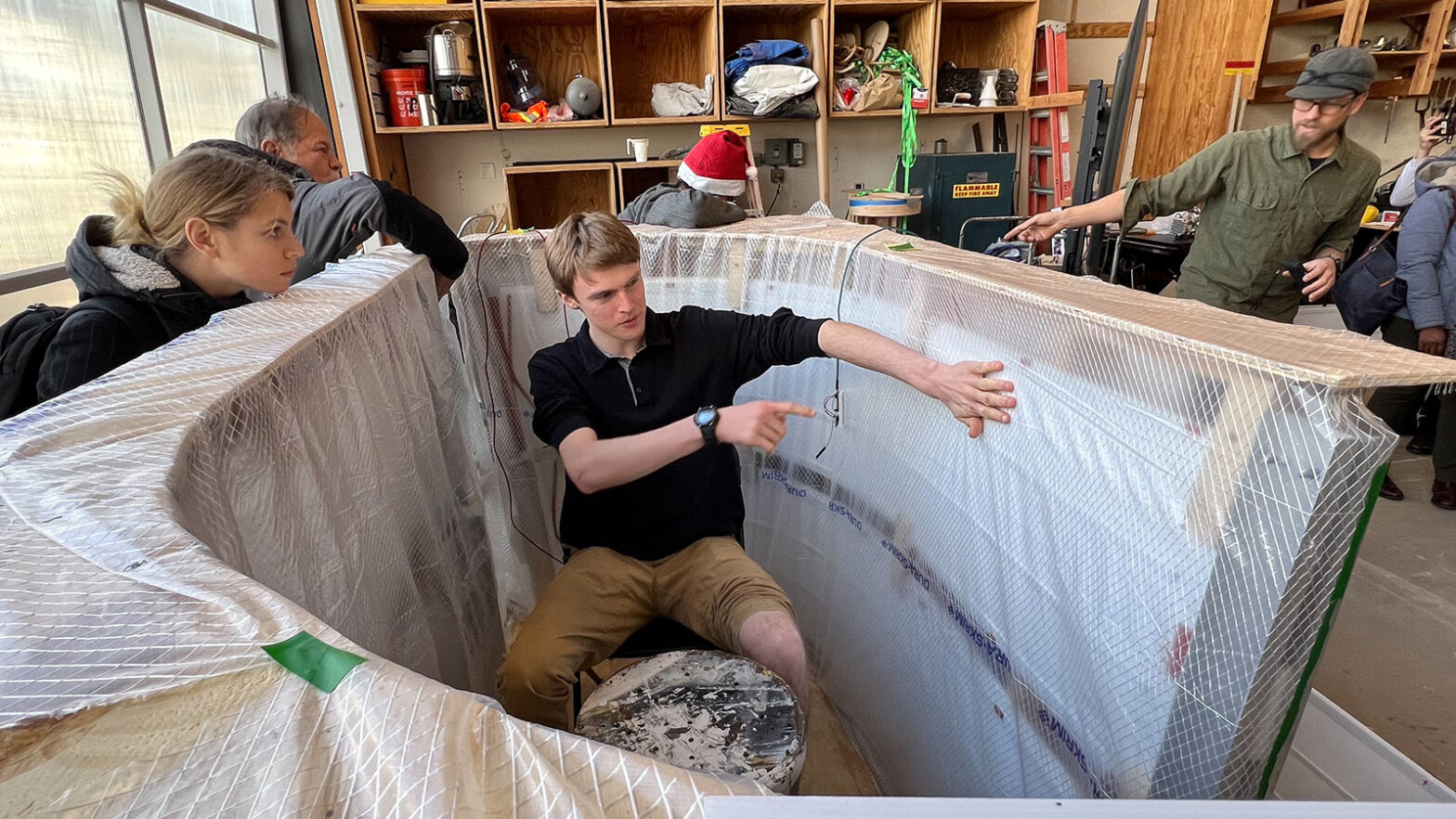
For this class final, bring a wrench
By
on
But one Princeton course did things a little differently. In Designing Sustainable Systems, students supplemented readings and lectures with power tools and plumbing equipment.
The end result combined academic rigor with experiential learning: first, students learned the tenets of sustainable design and explored the ins and outs of burgeoning technologies like heat pumps. Then, they applied those concepts to build a two-person, outdoor study space that employs heat pump technology to keep its users comfortable.
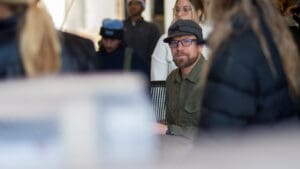
“I wanted to challenge the idea of what you’re supposed to learn at a university,” said the course’s instructor Forrest Meggers, associate professor of architecture and the Andlinger Center for Energy and the Environment. “A lot of learning that goes on in college is entirely knowledge-based. But I think it’s also an extremely valuable set of skills to be able to be creative with how to make things, adapt them, and troubleshoot them.”
Meggers asked students to explore what buildings might be like in “the new normal,” reflecting both a post-pandemic world and the challenges of climate change.
Students discussed the shortcomings of buildings’ heating and cooling systems, which have limited ability to circulate fresh air, and considered ways to build structures that could provide users with plenty of air while keeping temperatures comfortable.
They also learned how to account for the carbon pollution embedded in a building project, from sourcing and transporting materials to construction and upkeep, and how builders can optimize heating and cooling using sensors that collect and share real-time data.
Textbooks into power tools
Once they learned the concepts, the students got to work: drilling, wiring, and plumbing. In the semester’s second half, students joined one of four project teams: design, heating, performance, and controls.
The groups collaborated to build a two-person outdoor study space that used heat pumps to both heat and cool its users. Engineering, architecture, humanities, and social sciences students worked side-by-side to design and build the structure with an eye to human comfort, access to fresh air, and a low carbon footprint.
The project taught the students skills outside of their expertise. Clarissa Allert, a sophomore architecture student, had no prior coding experience before joining the controls team to set up real-time data collection. Nadia Rodriguez, a senior in computer science, had plenty of coding experience but had to learn to work with the tools needed to build the structure.
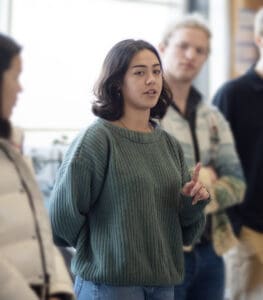
“A coding final is a lot different than installing circuits and plumbing,” Rodriguez said. “This is the first time I’ve actually built something tangible in a class.”
Among the most valuable lessons students say they learned was how much troubleshooting and adjustment was required to go from their original concept to a finished product.
Mei Geller laughingly outlined the heating team’s struggle to install plumbing.
“We were warned that a lot of things would go wrong from the very beginning,” said Geller, a junior in anthropology. “But that’s one of the things you hear but don’t believe until you actually try to start building.”
Marissa Mejia, a senior studying psychology, added that leaking water pipes were a recurring challenge for the heating team. “I started bringing a change of clothes to class,” she said.
Instead of feeling stressed, though, Geller and Mejia said they appreciated having the chance to work through mistakes without being penalized for them. “It gave us the chance to celebrate the small successes when we started to fix some of the problems,” Mejia said. “There was a lot of camaraderie.”
Meggers hopes the students learned that building and troubleshooting designs are incredibly valuable skill sets.
“The reality of building anything is that there’s always going to be a problem,” Meggers said, “and if you don’t know anything about how to troubleshoot those problems, that really limits your ability to do experiments that may actually be answering complicated questions. The processes that the students were working on in this class are the same processes that my lab works on in our research.”
A microcosm of the University
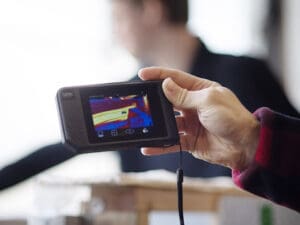
The class demonstrated its final product for the Princeton Sustainability Committee at an event co-sponsored by the Office of Sustainability.
Students described to committee members how they used thermal cameras to check the heating efficiency of the structure and showcased real-time data from the sensors they had installed.
“It’s great to see students learning in this hands-on, fun, and interactive way,” added Ijeoma Nwagwu, assistant director of academic engagement and campus as lab initiatives for the Office of Sustainability. “Right here on our campus, they are testing emerging methodologies, instruments, and data collection processes to better understand how sustainable design can impact a changing climate.”
Meggers said that although the structure his students created was mostly for demonstration purposes, the University could employ similar ideas for heating and cooling outdoor structures like bus shelters.
“I always try to promote the idea that we can do research on our actual campus buildings and infrastructure and landscapes,” said Meggers, who is also involved with projects like installing CO2 monitors in Dillon Gym to study air circulation via the Office of Sustainability’s Campus as Lab initiative. “This class epitomizes the mindset that our campus is a living laboratory for students and researchers to explore.”
